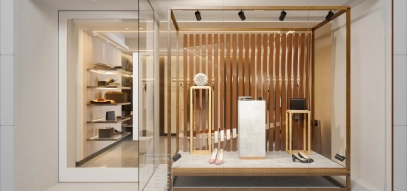
Business challenges – Overview of retail leases in Thailand
Overview of retail leases in Thailand
For companies looking to invest in the retail sector in Thailand, the appetite for available and new floor space continues apace. According to CBRE Q2 2022 Retail Figures, the total supply of retail space in Bangkok, including suburban Bangkok, was around 7.9 million square meters, of which 50% is classified as suburban. Of the total retail floor space, there is around 400,000 square meters vacant (or 5%), while a further 1.5 million square meters of retail space is either being planned or is under construction.
In most of Bangkok's 50 administrative districts, retail real estate mainly consists of mixed use shopping malls. These malls can be further divided into modern enclosed malls, community malls, traditional shophouses and supporting retail (retail areas in mixed use projects). The country's four major retail players are Central Group (Central Department Stores, Central Pattana), Siam Future Development (Mega Bangna, Esplanade), Siam Piwat (Siam Center, Siam Paragon, IconSiam) and The Mall Group (The Mall, Emporium).
While there is an abundance of high-grade retail space in Greater Bangkok, the market is particularly competitive with only a 5% vacancy rate. The city's retail vancancy landscape can be broken down into three main footfall segments: suburban (2.9%), midtown (6.2%) and city centre (8.1%). In general terms, the city centre includes the CBD (Sathorn; Silom, Rama IV; Rajdamri; and upper Sukhumvit), midtown spans lower Sukhumvit, Ramkhamhaeng and Bang Kapi in the east; Victory Monument, Chatuchak and Phaholyothin to the north; Pinklao, Wong Wien Yai to the west; and Rama III, Rat Burana and Suksawat to the south.
Suburban areas are quickly expanding with the development of large residential projects that include gated communities and condominiums, many of which are connected to the mass transit systems of the BTS and MRT. These locations cover Don Muang and Rangsit to the north; Ramintra and Bang-Na to the east, Rama II and Phetkasem in the south; and Taling Chan and parts of Nonthaburi in the west.
A crucial consolation for retailers eyeing expansion or entrance into Thailand's growing retail sector is that Thai landlords have become increasing more flexible. Instead of a fixed rate (based on per square meter) only contract, many landlords are now including a percentage of store income to be included in the agreement in lieu of higher fixed rates. Even so, you may find there are minimum sales guarantees included in these types of contracts.
Whereas rental leases are normally for three years, a longer lease can be negotiated for between 15 and 30 years. Normally those who take out shorter term leases make lower levels of capital expenditure to the fit out of the retail store. Nonetheless, whatever the length of lease signed, landlords will require a security deposit of up to six months, but 'rent free' periods can be negotiated for the time it takes to fit out a retail space. During a retail lease, tenants are required to pay rent one month in advance, while service charges are billed separately to monthly rent and include air-conditioning, car parking, management fees, etc.
While there are numerous challenges to opening a retail business in Bangkok or a regional city, Mazars Thailand provides its clients with world-class advice from a local perspective that will help you navigate a course to achieving your corporate goals.



